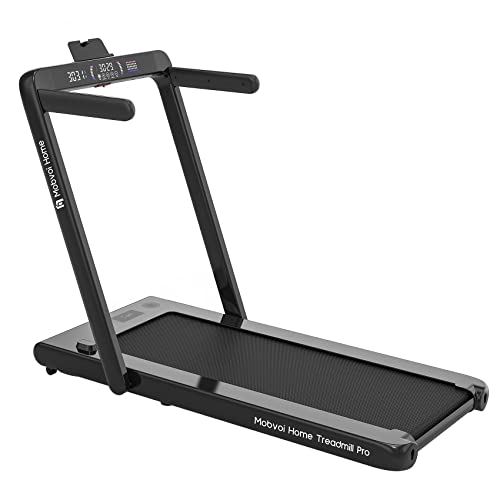Treadmills: A Comprehensive Guide to Understanding Their Functionality, Benefits, and Appropriate Selection
Intro
Treadmills have become a staple in contemporary fitness regimens, both in homes and fitness centers worldwide. They use a hassle-free and efficient way to keep cardiovascular health, increase endurance, and assist in weight management. This article explores the various types of treadmills, their advantages, functions to think about when buying, and some FAQs to assist users in making informed choices.
Types of Treadmills
When it concerns choosing a treadmill, it is important to comprehend the different types readily available in the market. Here are the primary classifications:
1. Manual Treadmills
- System: These treadmills have an easy design and depend on the user's efforts to move the belt.
- Pros: More inexpensive, quieter operation, no electricity needed.
- Cons: Limited functions, may not supply the exact same range of workout intensity.
2. Motorized Treadmills
- System: Powered by a motor that drives the belt, allowing users to stroll or run at a set pace.
- Pros: Greater range of speeds and inclines, equipped with various functions such as heart rate monitors and exercise programs.
- Cons: More pricey and may need more upkeep.
3. Folding Treadmills
- System: Designed for those with limited space, these treadmills can be folded for easy storage.
- Pros: Space-saving, frequently motorized, versatile features.
- Cons: May be less durable than non-folding models.
4. Industrial Treadmills
- Mechanism: High-quality machines developed for usage in health clubs and gym.
- Pros: Built to endure heavy usage, advanced functions, frequently consist of guarantees.
- Cons: Pricey and not perfect for home use due to size.
5. Curved Treadmills
- Mechanism: An unique design that enables users to propel the belt using their own energy.
- Pros: Offers a more natural running experience, promotes much better running form.
- Cons: More expensive and can be noisier.
| Treadmill Type | Pros | Cons |
|---|---|---|
| Handbook | Budget friendly, no electricity needed | Minimal features |
| Motorized | Range of speeds, advanced functions | Upkeep required |
| Folding | Space-saving, typically motorized | May do not have toughness |
| Business | Constructed to last, professional-grade functions | Costly |
| Curved | Natural running experience, promotes great form | Higher cost |
Advantages of Using Treadmills
Treadmills offer various benefits that can contribute to one's overall health and wellness goals. A few of these advantages consist of:
- Convenient Workouts: Treadmills allow users to work out inside your home despite weather.
- Cardiovascular Health: Regular usage can enhance heart health by increasing endurance and promoting healthy circulation.
- Weight Management: Effective for burning calories, which helps in weight loss and management.
- Adjustable Workouts: Users can control speed, slope, and period to create individualized exercise experiences.
- Security: Treadmills provide a predictable surface area, reducing the threat of falls compared to outside running.
- Multifunctional: Many treadmills come with features like heart rate screens, exercise programs, and even entertainment systems.
Selecting the Right Treadmill
When selecting a treadmill, prospective buyers must think about several key elements:
Features to Consider:
- Motor Power: Typically determined in horse power (HP), a motor strength of a minimum of 2.5 HP is advised for severe runners.
- Belt Size: A longer and wider belt accommodates numerous stride lengths, offering comfort during exercises.
- Incline Settings: Adjustable slope features replicate outside hill running and can increase exercise intensity.
- Weight Capacity: Ensure the treadmill can support the user's weight for safety and longevity.
- Console Features: Look for user-friendly dashboards, exercise programs, and Bluetooth compatibility for streaming music or other functions.
Budget Considerations
- Under ₤ 500: Entry-level manual treadmills suitable for casual walkers.
- ₤ 500 - ₤ 1,500: Mid-range motorized treadmills that offer more functions and much better durability.
- ₤ 1,500 - ₤ 3,000: High-end designs with advanced innovation, bigger motors, and longer warranties.
- Over ₤ 3,000: Commercial-grade treadmills perfect for frequent usage in health clubs or training centers.
Often Asked Questions (FAQs)
1. How typically should I use a treadmill?
It is advised to use a treadmill a minimum of three to 5 times a week, incorporating numerous intensity levels for best results.
2. Can Home Treadmill slim down by utilizing a treadmill?
Yes, consistent use of a treadmill can add to weight-loss, specifically when combined with a well balanced diet and strength training.
3. What is the best speed to stroll on a treadmill for beginners?
A speed of 3 to 4 miles per hour is a suitable range for novices. It's essential to start sluggish and slowly increase rate as comfort and endurance enhance.
4. Do I need to use a treadmill if I currently run outdoors?
Utilizing a treadmill can offer fringe benefits, such as regulated environments and differed workouts (slope, periods) that are not always possible outdoors.
5. How do I keep my treadmill?
Regular upkeep includes oiling the belt, cleaning up the deck and console, and examining the motor for optimum efficiency.
Treadmills are essential tools for those seeking to boost their fitness levels in a controlled and convenient manner. With numerous types readily available, understanding their features and advantages is vital for making an informed purchase. By thinking about personal exercise requirements, space accessibility, and spending plan restraints, people can find the most ideal treadmill that fits their lifestyle. Integrating treadmill workouts into a well balanced physical fitness regimen can result in improved health results and a satisfying workout experience.

